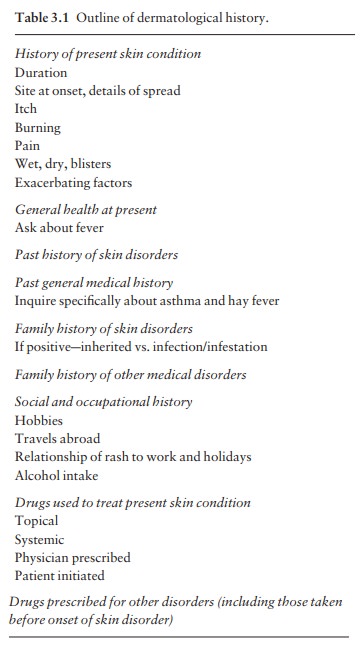Chapter: Clinical Dermatology: Diagnosis of skin disorders
Diagnosis of skin disorders
Diagnosis
of skin disorders
The
key to successful treatment is an accurate diagnosis. You can look up
treatments, but you cannot look up diagnoses. Without a proper diagnosis, you
will be asking ŌĆśWhatŌĆÖs a good treatment for scaling feet?ŌĆÖ instead of ŌĆśWhatŌĆÖs
good for tinea pedis?ŌĆÖ Would you ever ask yourself ŌĆśWhatŌĆÖs a good treatment for
chest pain? Luckily, dermatology differs from other specialties as its diseases
can easily be seen. Keen eyes and a magnifying glass are all that are needed
for a complete examination of the skin. Sometimes it is best to examine the
patient briefly before obtaining a full history: a quick look will often prompt
the right questions. However, a careful history is important in every case, as
is the intelligent use of the laboratory.
History
The
key points to be covered in the history are listed in Table 3.1 and should
include descriptions of the events surrounding the onset of the skin lesions,
of the progression of individual lesions, and of the disease in general,
including any responses to treatment. Many patients try a few salves before
seeing a physician. Some try all the medications in their medicine cabinets,
many of which can aggravate the problem. A careful inquiry into drugs taken for
other conditions is often useful. Ask also about previous skin disorders,
occupation, hobbies and disorders in the family.

Related Topics